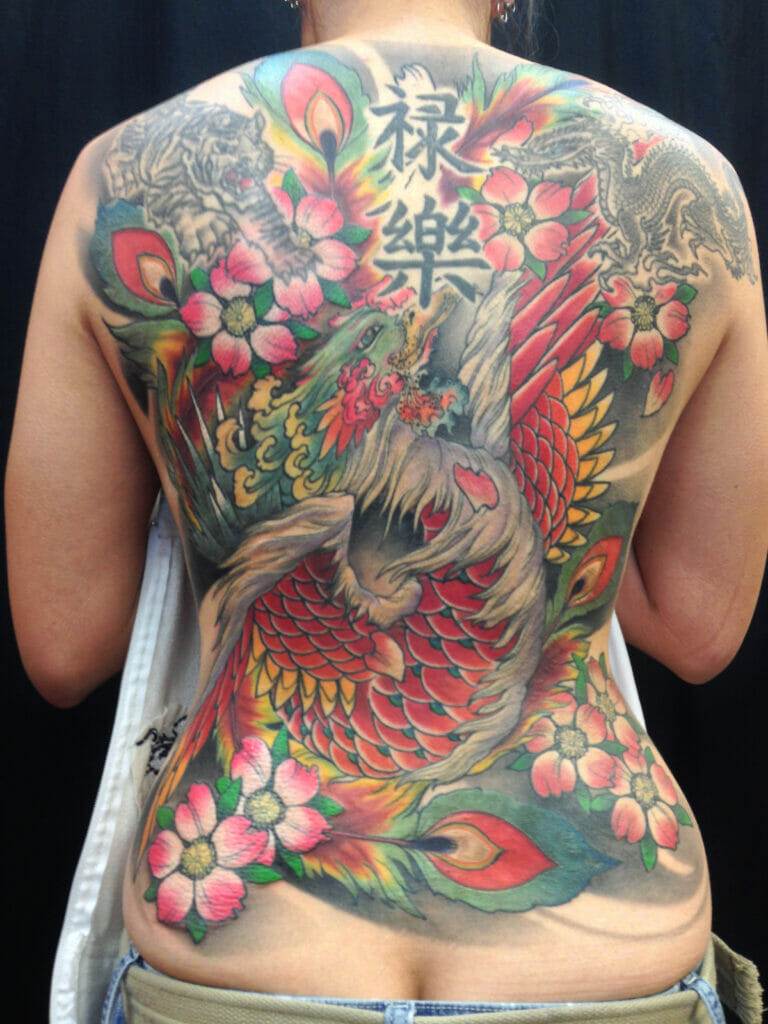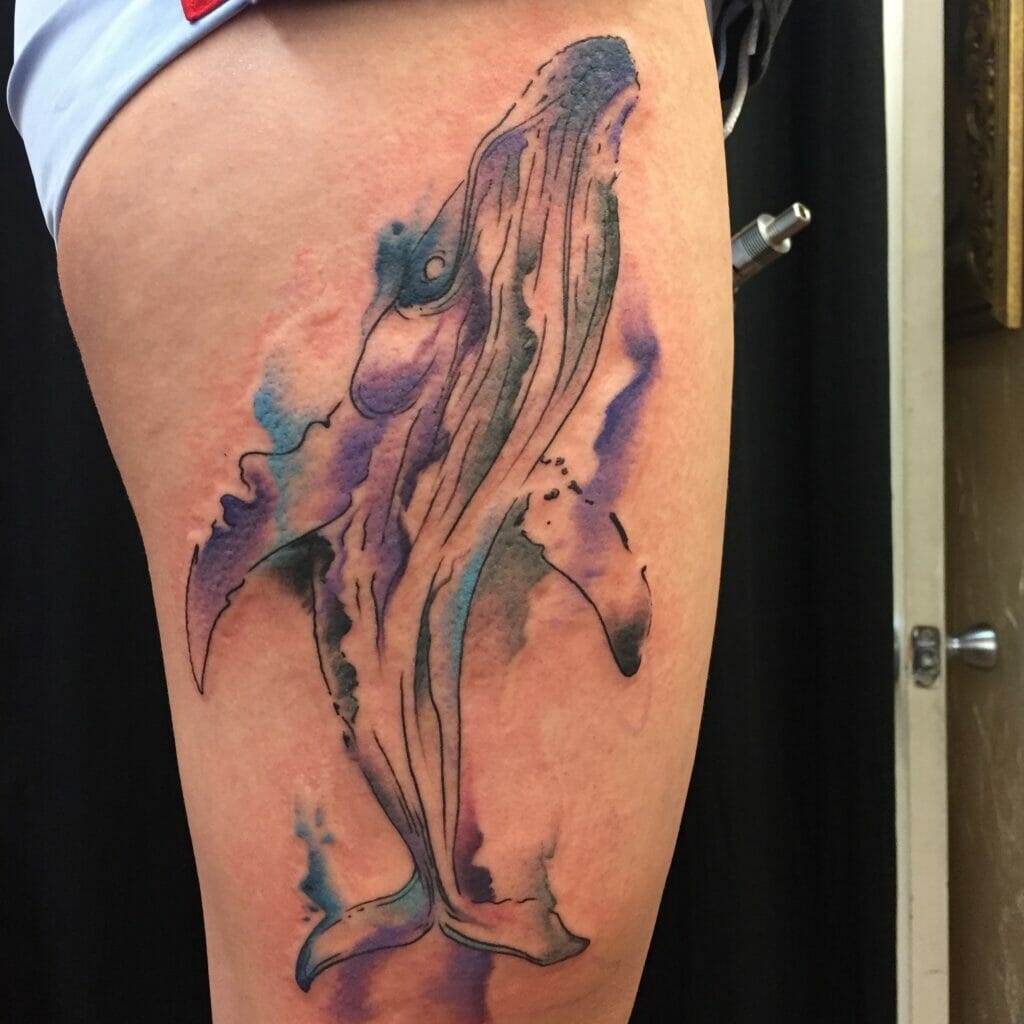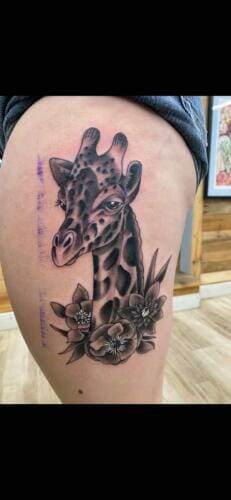
Ever wondered why some people wince at the mere thought of getting a tattoo, while others seem to endure the process with a grin? Well, it’s all about the tattoo placement. The pain levels can vary significantly depending on where you decide to get inked. Why is this so important? Simply put, understanding tattoo pain can help you make more informed decisions about tattoo placement, saving you from potential discomfort and regret.
Our aim with this article is to lift the veil on the often under-discussed topic of tattoo pain. We’ll provide you with a comprehensive guide that explores the pain levels associated with different tattoo locations. This isn’t just a clinical overview – we’ve included personal experiences and industry research to rank the top 10 most common tattoo placements from least to most painful.
So, are you ready to dive into the exploration of pain and tattoos, and perhaps learn a thing or two that could spare you some discomfort on your next inking adventure? Let’s get started!
Understanding Tattoo Pain
On our journey into the realm of tattoos, one cannot ignore the elephant in the room – that’s right, we’re talking about tattoo pain. It’s an intricate tapestry, woven with threads of individual perception, skin sensitivity, and even factors like gender and age.
What we perceive as pain is not a one-size-fits-all sensation. Pain tolerance can vary significantly from person to person, and it plays a pivotal role in the tattooing process. Ever wondered why some folks can sit through hours of inking with nary a wince, while others might find a tiny finger tattoo to be a Herculean task? It’s all about how we, as individuals, respond to induced pain.
In this world of needles and ink, a tattoo artist isn’t just a creator of beautiful body art, they’re also your guide through the pain. They can manage the pain intensity during the tattooing process, ensuring it stays within your pain threshold. And then, there’s the magic of topical numbing creams, a knight in shining armour for those with a low pain tolerance.
But remember, each tattoo placement comes with its unique territory of sensations, so buckle up and let’s delve deeper!
The Top 10 Most Common Tattoo Placements
When it comes to tattoos, location is everything. Not only does it play a significant role in the design and visibility of your tattoo, but it also greatly influences the level of pain you’ll experience during the process. This guide offers a deep dive into the ten most common tattoo placements, highlighting the pain levels associated with each.
1. Hands and Fingers
Tattoos on the hands and fingers are notably painful due to the bony nature of these areas. They typically rate an 8/10 on the pain scale,
2. Elbows
Elbow tattoos, including those in the inner elbow, also rank high in pain due to the presence of major nerves and thin skin covering the bony area.
3. Lips
Lip tattoos are not for the faint-hearted, with a pain scale ranking of 8/10. This includes inner lip tattoos placed on the gum of your lower lip.
4. Groin and Genital Area
Despite being a meatier portion of the body, the groin and genital area are sensitive due to the numerous nerve endings and lymph nodes, making tattoos here quite painful.
5. Armpits
The armpit, home to the axillary nerve and numerous glands and lymph nodes, is another extremely painful location for a tattoo.
Remember, the pain experienced varies based on individual pain tolerance, age, weight, and even sex, with some studies suggesting women are more accepting of pain than men. To minimize pain, consider using a tattoo numbing cream, taking breaks during the process, and choosing an experienced tattoo artist.
Least Painful Tattoo Placements
Ever wondered where the least painful place to get a tattoo is? Areas with thicker skin, fewer nerve endings, and a bit of cushioning fat tend to be the least painful. In other words, the less boney the area, the better.
Surprisingly Low-Pain Tattoo Locations
Among the surprisingly low-pain areas for tattoos are the outer thigh and the forearm. These areas have relatively thick skin and fewer nerve endings, making them ideal for first-timers or those with a lower pain tolerance.
Why These Locations are Low-Pain
The secret behind their low pain levels lies in the body’s anatomy. Thicker skin provides a sort of buffer against the needle, while fewer nerve endings mean you’re less likely to feel intense pain.
Tattoo Design Ideas for These Areas
For the outer thigh, consider larger designs that can be spread out over the area, like a floral arrangement or a landscape. For the forearm, popular choices include script tattoos or smaller, meaningful symbols. Remember, it’s your canvas – make it personal!
Most Painful Tattoo Placements
Ever wondered about the most painful places to get a tattoo? Well, buckle up, because we’re about to dive into the world of tattoo placement and the pain levels associated with each.
Ribs and Feet
First up, the ribs and feet. These areas are infamous in the tattoo world for their high pain levels. Why? The answer lies in the skin’s thinness and the high concentration of nerve endings in these areas. Remember that time you accidentally stubbed your toe? Yeah, imagine that, but with a tattoo needle. Ouch!
Managing the Pain
Now, let’s talk about managing this pain. One way is to use numbing creams. Another tip? Bring a squishy ball to squeeze—it might help distract you from the pain.
Real-Life Experiences
Don’t just take our word for it. Listen to the people who’ve been through it. Stories & Ink founder Stu described his hip and ankle tattoos as “equal in levels of scratchiness but not unbearable!” Now that’s some real talk.
Remember, pain is subjective, and everyone’s experience will differ. But knowing the potential pain hotspots can help you prepare for your next tattoo session.
Factors to Consider When Choosing a Tattoo Placement
Deciding on the perfect spot for your new tattoo involves more than just picking a place you like. It’s a process that requires careful thought and consideration. Pain tolerance, for instance, invariably plays a role in this decision.
Aside from pain levels, skin condition and healing process should also be factored in. Newly tattooed skin should be treated as an open wound, avoiding harsh chemicals to prevent irritation or infection. Post-tattoo care doesn’t stop after healing. Continued moisturizing helps the tattoo remain vibrant and fresh.
Moreover, the size and design of your tattoo can also dictate its placement. Larger, more complex designs may require a larger canvas such as the back, while smaller, dainty designs might be more suited for delicate areas like the wrist.
Popular Tattoo Placements
The upper thigh is a popular spot for large pieces due to its lower pain level. However, areas where bones are prominent, such as the arms and legs, can be more painful.
Ultimately, the decision on tattoo placement is highly personal and should reflect your individual style, pain tolerance, and body shape. When in doubt, consult with a professional tattoo artist to help guide your decision.
Tips for Minimizing Tattoo Pain
Getting a tattoo can be a thrilling experience, but it’s no secret that it comes with its share of discomfort. However, there are several ways to manage and minimize tattoo pain. The process starts with the placement of your tattoo. Choosing a less sensitive body part can significantly reduce the pain you experience during the process. For instance, areas with a bit of fat or muscle can be less painful than bony areas with thin skin.
Another effective strategy is the use of numbing creams or sprays. These products contain local anesthetics like Lidocaine, which can help numb the skin and reduce pain. However, be mindful of the timing, as the effects can wear off during the tattooing process. Always consult with your artist before using these products.
When planning for a larger piece, consider scheduling longer sessions to minimize the number of sittings and the associated pain. This approach allows your body to adjust and deploy its natural pain defenses.
Lastly, don’t forget about aftercare. Proper care of your new tattoo can prevent prolonged tenderness or discomfort. Hydrate your skin, avoid alcohol, get enough sleep, and maintain a healthy diet to help your body heal post-tattoo.
Conclusion
And so, we reach the end of our journey exploring the fascinating world of tattoos and the pain associated with different placement areas. We’ve ventured through the top 10 most common tattoo placements and their corresponding pain levels. From the lower pain levels experienced on the upper arm to the more intense pain associated with the rib area, we’ve seen it all.
Remember, tattoo pain is a highly subjective experience and is influenced by personal pain thresholds, skin condition, and even the tattoo artist’s technique. Therefore, it’s crucial to consult the tattoo pain chart before deciding on your tattoo location to ensure a smoother experience.
But, what does your personal pain threshold say about your choice of tattoo placement? And how will your decision impact your tattooing experience? As we’ve seen, the answers to these questions can significantly influence your tattoo journey.
So, why not share this article with others who are considering getting a tattoo? It might just help them make a more informed decision. After all, knowledge is power, and in this case, it could mean the difference between a bearable and a painful tattooing experience.















